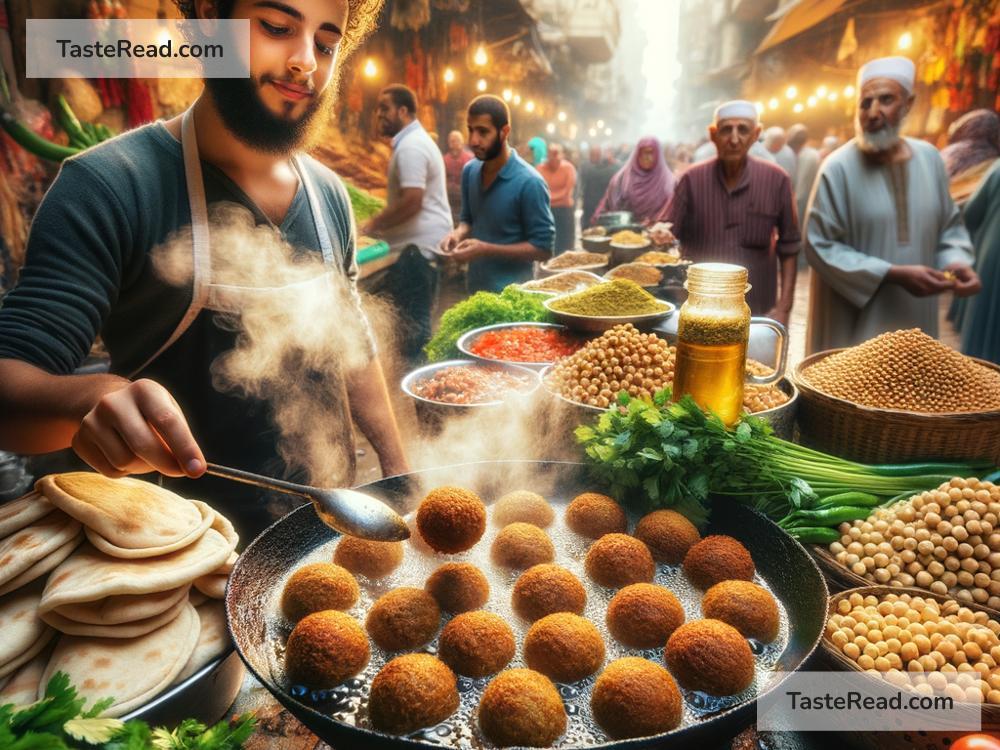The Story of Egyptian Falafel: A Dish with Ancient Roots
Falafel is one of the most popular foods in the Middle East and beyond. Wherever you go, whether it’s a bustling city or a small village, there’s a good chance you’ll find falafel served at a food cart, restaurant, or family table. While falafel can be found in many countries, Egypt has a special connection to this dish that dates back thousands of years. Let’s explore the story of Egyptian falafel, its unique differences, and its significance in Egyptian culture.
What Is Falafel?
Falafel is a deep-fried ball or patty made from mashed legumes mixed with herbs and spices. It’s usually served in a pita bread sandwich or as part of a mezze plate alongside salads, pickles, and tahini sauce. In addition to being delicious, falafel is a popular food for vegetarians and vegans because it’s plant-based.
People across the Middle East and North Africa enjoy falafel, but each region has its own twist on the recipe. In Egypt, falafel is known as “ta’ameya”, and unlike the chickpea-based falafel found in Israel, Lebanon, or Syria, Egyptian falafel is traditionally made with fava beans. This difference contributes to its unique taste and texture and reflects Egypt’s agricultural history.
Ancient Roots of Egyptian Falafel
The story of falafel in Egypt begins with the fava bean plant, which is one of the oldest cultivated crops in human history. Fava beans are thought to have originated in the Mediterranean region and were grown in ancient Egypt thousands of years ago. They became one of the staples of the Egyptian diet because they’re easy to grow, nutrient-rich, and a good source of protein. People used fava beans in many creative ways, and over time, one of these uses evolved into what we now call ta’ameya.
While the origins of falafel as a food are not entirely clear, many historians believe that it was first invented in Egypt. Some theories suggest that ta’ameya may have been eaten by Egyptian Christians during Lent, when they abstain from meat and dairy. Fava bean ta’ameya would have provided a nourishing meat-free alternative during this religious observance. From Egypt, the falafel recipe is thought to have spread to neighboring countries and regions, where chickpeas eventually replaced fava beans in some versions of the dish.
Fava Beans vs. Chickpeas: What Makes Egyptian Falafel Unique?
One of the defining characteristics of Egyptian falafel is its use of fava beans instead of chickpeas. This difference gives ta’ameya a slightly different flavor and softer texture compared to chickpea-based falafel. When preparing ta’ameya, dried fava beans are soaked in water, ground into a paste, and mixed with flavorful ingredients like parsley, coriander, dill, garlic, onion, cumin, and sometimes sesame seeds. The mixture is then shaped into balls or patties and fried until golden brown.
The brightness and herbal freshness of Egyptian falafel set it apart from its counterparts in other countries. Since Egyptian cuisine focuses heavily on bold spices and fresh greenery, ta’ameya reflects these culinary traditions. For example, many Egyptian families make their ta’ameya extra-green by blending generous amounts of herbs into the batter.
Another unique aspect of ta’ameya is that it’s often enjoyed as an affordable and filling breakfast or snack item. In Egyptian cities, you’ll find ta’ameya sold at street food stalls and small shops early in the morning, often paired with local bread, pickled vegetables, or mashed eggplant. It’s a quick, delicious meal that’s loved by people from all walks of life.
Ta’ameya Today: A Symbol of Egyptian Culture
While the exact origins of falafel may remain a mystery, one thing is clear: ta’ameya holds a beloved place in Egypt’s culinary history. It’s deeply woven into the daily lives of Egyptians, from quick bites at street stalls to homemade versions served in family kitchens. Egyptians are proud of this dish because it reflects their creativity, love of fresh ingredients, and history as an agricultural society.
Ta’ameya is also a symbol of togetherness. Whether you’re sharing ta’ameya with friends or eating it on a busy morning commute, the dish creates a sense of connection. The smell of freshly fried falafel wafting from street stalls is a familiar part of daily life in Egypt, comforting and warm, like a taste of home.
Beyond Egypt’s borders, ta’ameya is a reminder of the country’s contributions to world cuisine. Tourists from around the globe who visit Egypt often fall in love with this flavorful dish. Many go home and try their hand at recreating ta’ameya in their own kitchens, spreading its popularity far and wide.
Conclusion
The story of Egyptian falafel, or ta’ameya, is more than just the history of a dish—it’s a reflection of a country’s identity and the ingenuity of its people. From its deep connection to ancient crops like the fava bean to the way it brings together families and neighbors, ta’ameya is a shining example of Egypt’s rich culinary heritage.
So, the next time you take a bite of falafel, think about the long journey this humble food has traveled—and savor its unique story, flavor, and place in culture. Whether it’s served in Egypt or anywhere else in the world, falafel is proof that even simple foods can have a history as deep as the Nile River.


